Breaded Premium Steaks - Deep Cut #1
In which I start checking out spots for milanesas de bife de chorizo.
This is not, precisely, the start of a new, sweeping project to find the best milanesa in Buenos Aires. First of all, it would be a massive undertaking, as it’s probably the most ubiquitous food in Argentina. You can find milanesas on menus in restaurants that aren’t even Argentine in style. So, first, what is a milanesa?
At its most classic, it’s a pounded thin piece of beef that’s been breaded and fried. Strangely, despite the strong Italian heritage here, the Argentine milanesa is more similar to a schnitzel than it is to an Italian cotoletta alla milanese, the well known veal cutlet of Milan. What are the differences? The Italian dish, by traditional specification, is always and only made from veal loin, bone in, and must be “two fingers high”, dipped in egg, coated in breadcrumbs, and fried in clarified butter. A schnitzel is classically made from either veal or pork, though chicken or turkey are acceptable. It’s a thin cut of meat, boneless, coated in flour, then beaten eggs, and then lightly dipped into breadcrumbs, but they should never be pressed in, so that they create a lighter crust, then fried, and traditionally served with either a mushroom or mustard sauce.
The Argentine version goes the thin route, often very thin - not just a thin slice, but the meat is pounded out. Classically, it’s beef, but chicken, pork, lamb, and vegetables abound. And people argue over what cut of beef should be used. It’s dipped in flour, beaten eggs, and breadcrumbs; often double dipped in the latter two, to ensure it’s well coated, and it’s not unusual to see people really pressing the breadcrumbs in. It’s fried in oil rather than butter, and, at its most classic, is served with nothing more than a wedge of lemon. A fried egg - a caballo - is not amiss. Beyond that, Argentines get creative with toppings - rarely a simple sauce like the schnitzel, the most common sorts are probably napolitana, topped with tomato sauce and mozzarella and optionally ham; and suiza with bechamel that has either parsley or spinach finely chopped in it, and cheese - often provolone. But there are whole restaurants dedicated to toppings variations.
So, I’m not looking for creative toppings. I’m looking for the places that approach the milanesa fairly classically, but have their own special touch that makes them stand out. Actually, I’m looking to be impressed. I don’t often find Argentine milanesas to be all that interesting. They’re usually too heavily breaded for my tastes - a local chef friend asserts that there should be more breading than meat if it’s done right. Which fits in with the Argentine devotion to bread in quantity, if not quality - local sandwiches are not unusually a thin slice or two of lunchmeat and cheese on bread rolls that are a couple of inches thick. I want the filling. I want the meat. And so for this first round, and maybe a second, I’m going with places that make their milanesas from a premium cut - the bife de chorizo - which is various defined as the entrecote, the New York strip, the sirloin, the porterhouse, and on. The issue, as I’ve looked at in the past, is that the cow is simply cut up differently and so there aren’t precise equivalents. Either way, this is one of the juicier, tenderer cuts of beef.
Practically since the day I first got involved in the gastronomy world here in Buenos Aires, I’ve heard about the Petersen brothers. I honestly don’t have a clue as to what makes them so famous that people practically whisper their names. They have had multiple cooking shows on TV - if the info online is correct, the three brothers - Roberto, Christian, and Lucas - currently have four shows. They also have or had three restaurants and a bakery (La Valiente), at the moment the only restaurant I know of is Hermanos, Darda Rocha 2208, in San Isidro, a suburb north of the city. I was up in the area for another reason and decided to stop in, as a) I’d never tried their food, and b) their milanesa is much touted in the foodie world.
I’m not wowed by the presentation, especially since this piece of meat is maybe two-thirds the size of a typical milanesa for the same price of 16,000 pesos, but worse, in most places, that includes a guarnición, a side dish. Here, it doesn’t, and the various options run anywhere from 5-10,000 additional. On first bite, I’m less than enthused. It’s unseasoned - as in, I don’t think they salted the meat before breading it. That’s unusual, and I don’t know if someone just missed it - supposedly, they bread these to order, though I’m not clear as to why - the Petersens apparently feel they get a better result. But most chefs know that a breading is better if it’s allowed to sit for a little while and meld to the meat. The steak itself is quite good - it’s a 21-day aged piece of bife de chorizo, and it’s breaded in a crumb mixture that has an interesting flavor - later research suggests that they use a mix of wheat and rye breads in it. The side dish I picked, a gratin of broccoli and spinach, arrives and I am warned that the metal dish it’s in is blazing hot and to be careful. It’s not. It’s barely warm, and the gratin itself is tasty, but no warmer. Overall, I’d have liked the milanesa a lot more had it been salted (adding salt after the fact, outside of the crust, is just not the same). As it is, I leave a bit disappointed.
Winning the award for the most over-priced milanesa we’ve ever encountered, this bife de chorizo version from El Preferido de Palermo, Borges 2108 in Palermo. This place is “on the list” of the 50 best in Latin America, and regularly garners top honors. I remember it when it was a very good, neighborhood “bar notable”. Then it was taken over by the folk behind the legendary steakhouse Don Julio, and it all became a bit… precious.
Now, look, it’s a delicious milanesa. On its own merits, I have zero complaints. Beautifully tender steak, and a decent thickness - probably bordering on half an inch thick, rather than the pounded thin shirt-cardboard that so many are. It’s free of gristle and trimmed of excess fat. It’s double breaded in coarse breadcrumbs, supposedly with egg and parsley, though I see no evidence of the herb. It’s served simply with a wedge of lemon on the plate, though a dish of parsley mayo is offered on the side. It does not go with the milanesa, though their vinegary and spicy house hot sauce does quite well.
Here’s where I have an issue with it, as good as it is… A single milanesa runs just over 38,000 pesos, or about $33, and that’s without a guarnición, or side dish, most of which will run you anywhere from about 7000-12000 pesos additional. They have a combo for two, which we ordered, which isn’t much of a combo, it’s just two milanesas, you still have to order your side dish(es) separately, for just just shy of 63,000 pesos, or $55. Now, I get that it’s a bife de chorizo, but so was the one from Hermanos above, and theirs is dry-aged (though admittedly far, far smaller). For me, that’s just too pricey to justify. And, having had a similarly “not worth it” experience during my meatball binge, I don’t see myself going back for another shot at it.
Now, that’s a nice looking plate for lunch. I did a Google search for places offering milanesas de bife de chorizo and put together a list that I will, or won’t, get to over time. Probably will. I like milanesas. And so I headed off to the west to Esquina, Café, Vino, Charlone 101 in Chacarita, which, until this search, I’d never heard of. Cute corner place, clearly popular with locals. And, for a small spot like this, a rather impressive menu.
The milanesa was near perfection. Decent thickness to the steak. Absolutely crunchy, deeply bronzed breadcrumb crust packed with flavor - salt, pepper, garlic, parsley, all evident both visibly and to the palate. It comes with a fried egg, which I’d prefer atop the milanesa - “a caballo”, but it was an easy move. And slightly lumpy (which is the right way) mashed potatoes with plenty of butter in them. At 17,100 pesos, $14, including the guarnición, it’s the best deal of these four. Plus, for me, it’s the best of them period.
Great service. The only negative I had was a bit out of their control. A gentleman seated at the table just outside the door of the place (they have quite a few sidewalk tables), who was puffing steadily on one of the foulest smelling cigars I’ve ever encountered, and the odor was just everywhere. They tried - they closed the door, despite it being a temperate day, and put on the AC, but just couldn’t get rid of that stench. And he was oblivious (or maybe intentional and un-caring), as nearby tables got up and moved as far from him as possible, and people were making comments. Had it been my restaurant, I’d have asked him to put it out, but that’s probably against the rules here in Argentina.
I’d forgotten that one of my favorite bodegones, old school diners, makes their milanesa from the same cut of steak. These are photos from my first visit there a couple of years ago to El Octavo, Bulnes 1408 in Palermo, because I liked them better than the new ones. I’ve revisited a couple of times and this is still a favorite dish.
Decent thickness on the steak. The breading has some parsley and salt in it - not sure if it has garlic or not, but it’s good. Could spend 30 more seconds each side frying to get just a touch crunchier. But it’s delicious, and it comes with hand-rolled spinach pappardelle in a garlic cream sauce (part of why it was hard to tell if the breading had garlic in it or not) which I love. The sauce could use a little thickening up, it tends to run off the noodles, but then you can sop it up with bites of the milanesa. It all works. It runs 23,200 pesos, just shy of $20, but it’s a large portion.
I’ll stop with these four for now. More to come, as always!

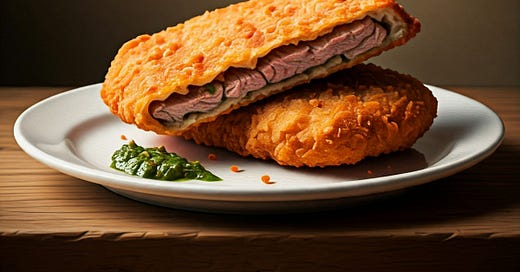


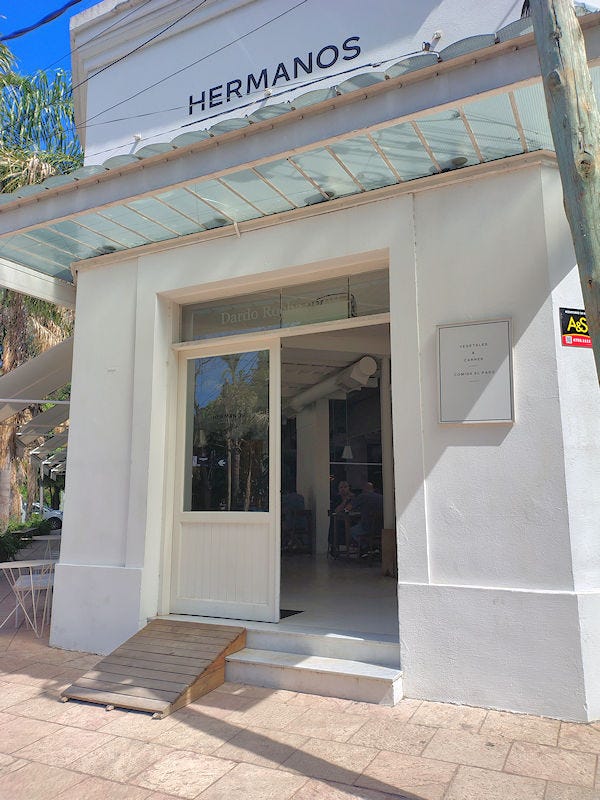
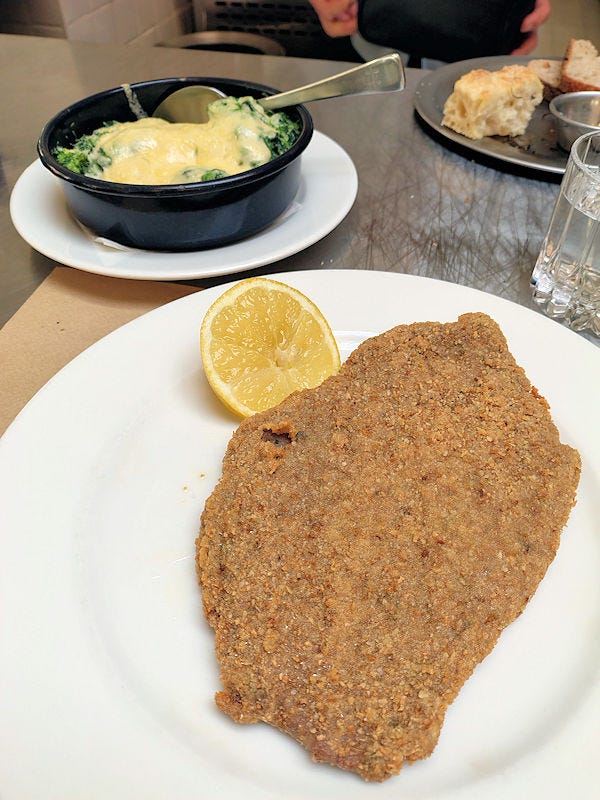

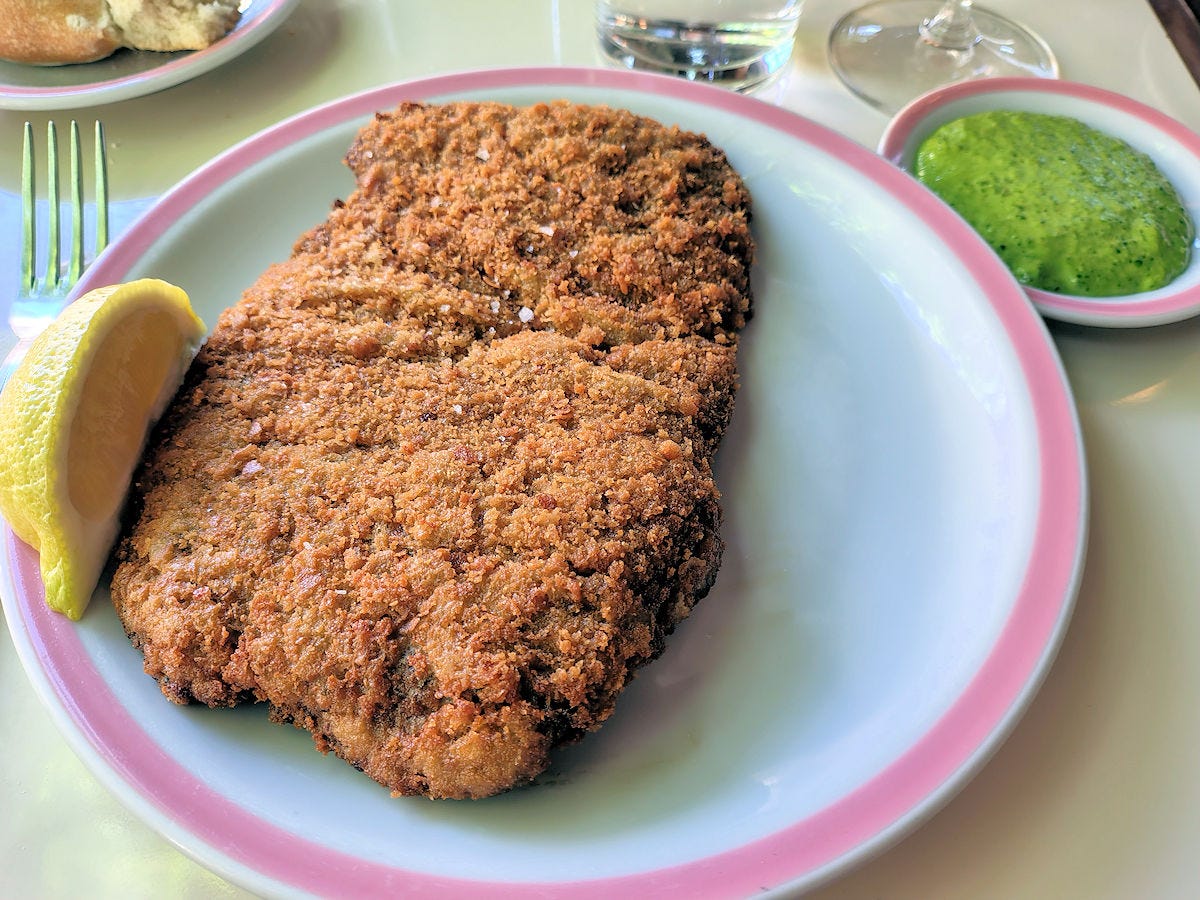
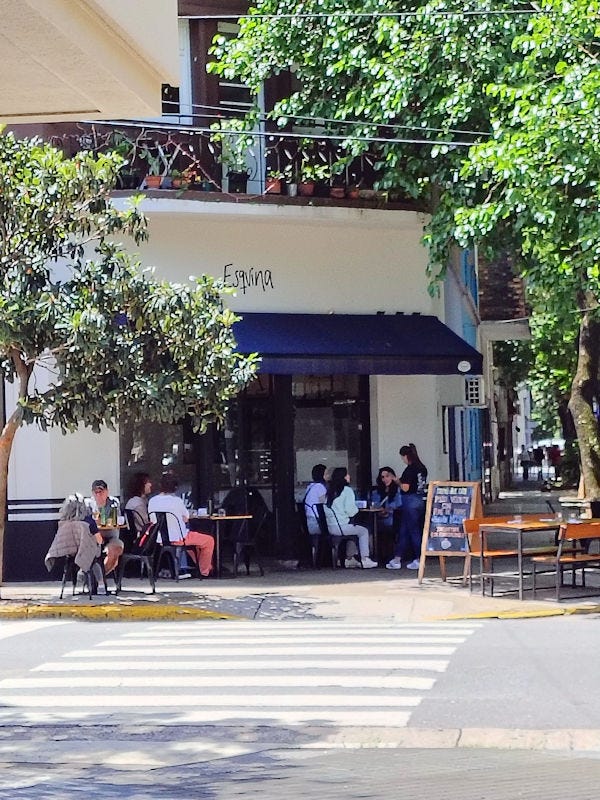
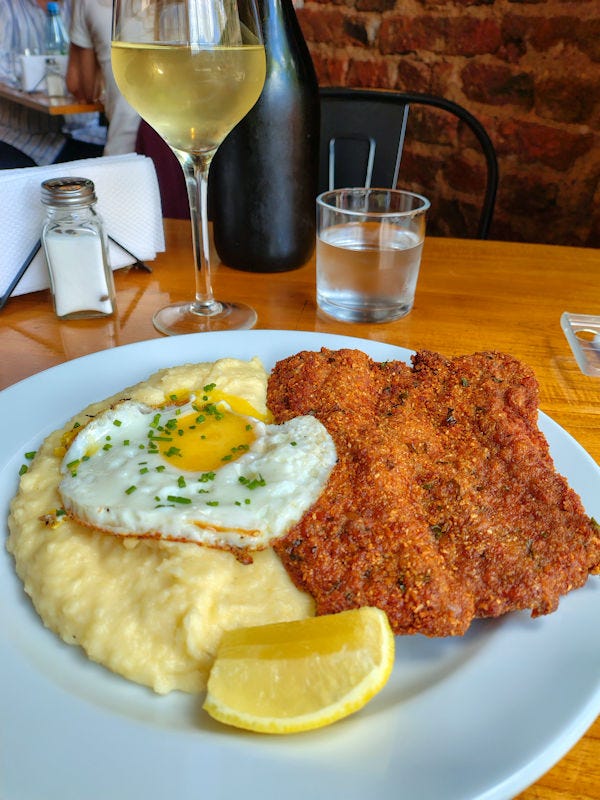
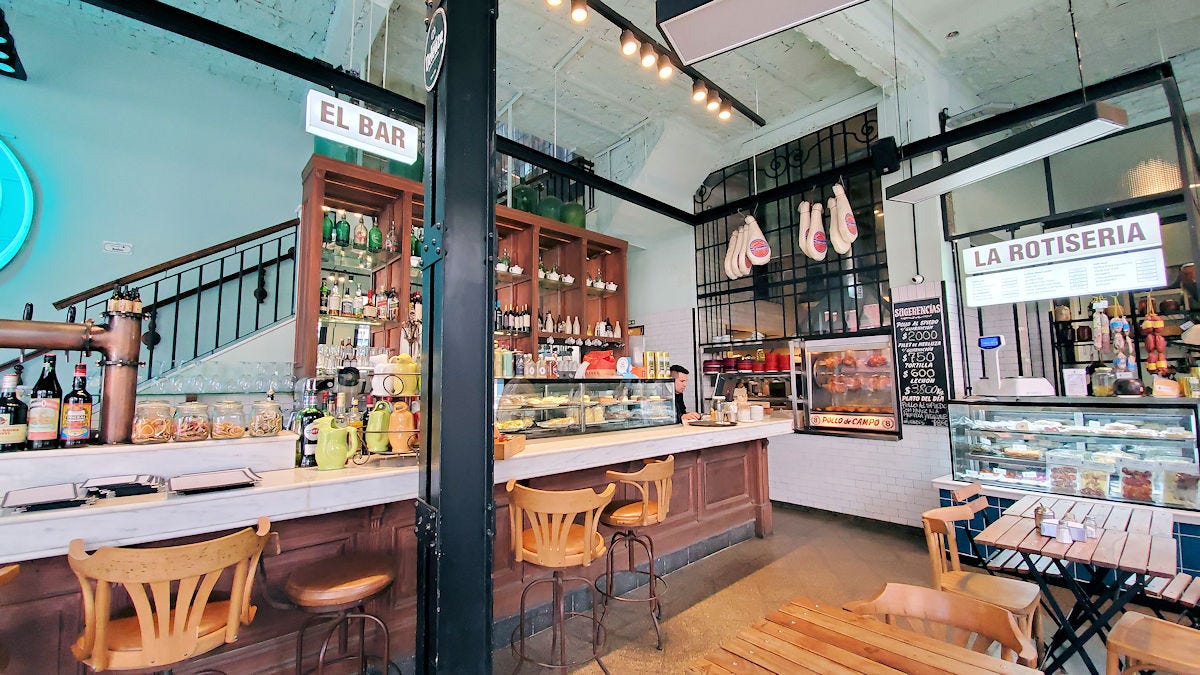
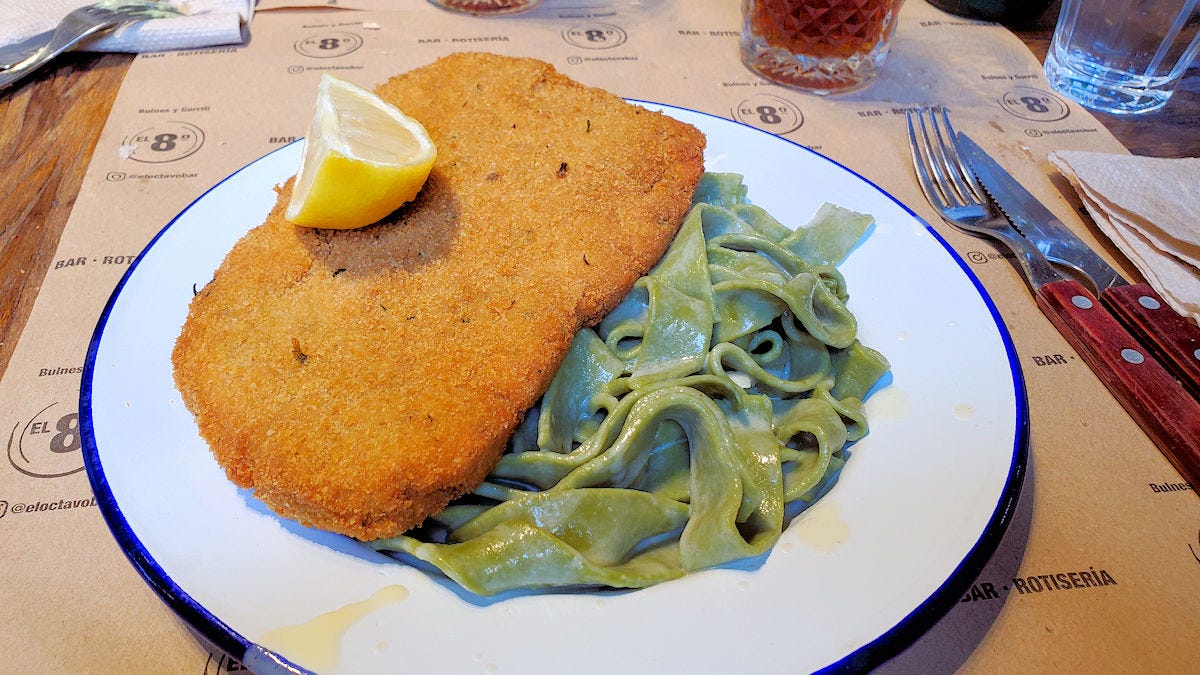
I make milanesas at home when I don’t really have time to cook. Here’s my question is it best to bread them yourself or are they just as good prebreaded by a reputable butcher? Like you said, it’s best to give the breading time to meld with the meat and I don’t always plan properly.